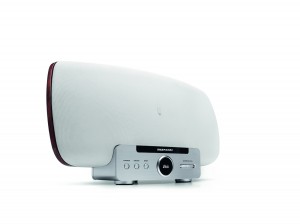Article – From the horse’s mouth
Yamaha AV Australia
MCR-755 – Micro Hi-Fi – Yamaha – Australia (Product Page)
My Comments
Sometimes you may want to kit out a bedroom, den, college / uni dorm room or small apartment with a music system that can provide DVD / Blu-Ray playback services for a reasonably-priced recent-issue 32”-37” flatscreen TV and treat you to that surround sound. But the idea of using a full home-theatre system with the 6 speakers may not fit the bill for these areas because these systems are simply too large and overwhelming for these areas. Similarly a soundbar may be considered not up to par because you value stereo separation and a lot of these are simply just speakers.
But, when browsing Yamaha’s Australian Website, I have come across the Yamaha MCR-755 Blu-Ray music system which, along with the MCR-750, is a traditional “three-piece” micro AV system that has a Blu-Ray player and DLNA network connectivity. A firmware update is now available for these systems to effectively add the “Internet radio” band to these systems. The MCR-755 has the Eureka 147 DAB/DAB+ digital radio as well as the FM radio as its broadcast-radio options.
They also connects to the TV using HDMI and exploits the Consumer Electronic Control and Audio Return Channel functionality that this connectivity method provides. This allows for sound from TV broadcasts and online TV that you play via your Smart TV to come through the system’s speakers. Depending on the TV you use, you may have some success in getting a bitstream surround signal from the pay-TV set-top box or other video peripheral that is connected to the TV via HDMI.
The key feature that the system has is the implementation of Yamaha’s “Air Sound Xtreme” to create a virtual 5.1 surround listening experience using the two speakers. This has resulted from Yamaha’s work on digital sound processing technologies as well as their “Sound Projector” soundbars,
As I know about newer AV products, I have a look through the instructions manuals that are delivered online and have found that there are a few shortcomings. For example, you can play a CD or content held on an iPod; or listen to broadcast radio or a source connected via the AUX In connections without needing to turn the TV on whereas you need to have the TV on if you want to play material held on your DLNA Home Media Network or on a USB thumb-drive.
Similarly, the unit could benefit from a dedicated digital input for TV use and / or an extra HDMI input socket. Here, these could benefit those of us who use smaller, usually low-cost, “dorm-grade” flatscreen TVs which are likely to be paired with this music system by providing a Dolby Digital decoding ability for the TV’s broadcast tuner, assuring surround-sound output from a pay-TV box or other video peripheral or simply provide an extra input for the TV.
As well, this class of Blu-Ray-capable “three-piece” micro AV system could support DLNA Media-Renderer and Apple AirPlay functionalities so as to work with the smartphones and tablets by using an existing home network that has the Wi-Fi segment.
The Yamaha MCR-755 has shown up as an example of a “three-piece” AV entertainment-system that can serve the small spaces yet gaining access to the full content that Blu-Ray and the like can offer.

